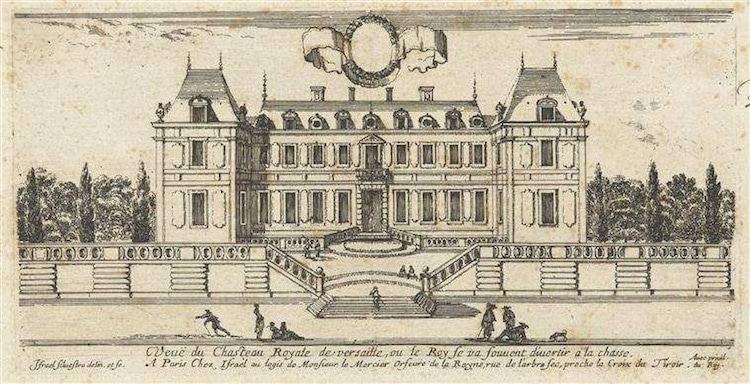Good article except for the usual silly statements about Marie-Antoinette. From My Modern Met:
Before it was the site of golden gates and manicured gardens, the Versailles estate was first a humble hunting ground. In 1607, Louis XIII—the 6-year-old, soon-to-be-king—visited the area on a hunting trip with his father, King Henri IV. Years later, he’d return to the forested spot, which was “ideally situated between his principle residence at Saint-Germain-en-Laye and Paris [and] surrounded by woods that were noisy with pheasants, boars, and stags” (Chateau de Versailles). Realizing the plot of land’s potential, he decided to build a brick and stone hunting lodge on the premises in 1623. (Read more.)Later in the article the claim about Marie-Antoinette "playing peasant" is once again made. In 1783, Queen Marie-Antoinette commissioned the architect Mique to build a village and farm on the grounds of her private retreat, the Petit Trianon. The "little hamlet" was to provide food for the royal family, thus giving an example of self-sufficiency to other nobles, as well as celebrating the traditional agricultural life of the French people. It a working farm, plus there were orchards, berry bushes, and fish in the pond. The Queen invited several destitute families to live and work in the hameau. A peasant village had existed at Trianon a century before but had been torn down by Louis XIV. The farm has often been cited as an example of decadence on the part of Marie-Antoinette, particularly the dairy with the porcelain milk pitchers. However, it must be taken into account that wealthy people all over Europe were building "follies" in their gardens, such as a fake ruined castles, ornate mosques, Chinese tea houses, solely for decoration. At least Marie-Antoinette's hameau had a practical purpose. Of course, she would not wear an elaborate court gown when spending time on the farm; she would wear a simple cotton dress and sometimes an apron. Therefore she is still accused of "playing dairy maid," although it is doubtful that she ever actually milked any cows. In the main "farm house" there was elegant furniture, a billiard table and such amenities for entertaining in the manner expected of a queen. Foreign guests and ambassadors were occasionally given hospitality at the hameau; the entire estate of Trianon was used on several state visits and was open to the public on Sundays. In our busy world there seems to be more of an appreciation of Marie-Antoinette's creative way of carving out a retreat for herself and her family, one which patronized and exulted French craftsmanship while simultaneously helping the poor. Share



















No comments:
Post a Comment